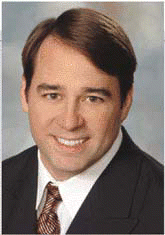Even in patients with relatively common sinus disease, decision making about endoscopic sinus surgery (ESS) can be difficult, and not all cases are the same. This was one of the points brought out in discussion of a series of cases at the Ask the Experts Panel: An Endoscopic Sinus Surgery Potpourri at the annual AAO-HNS conference in Toronto in September. During the panel, five leading sinus surgeons discussed several challenging cases.
Explore This Issue
February 2007Two Teen Cases
The first two cases presented were of teen patients, the first being presented by David Kennedy, MD, Vice Dean for Professional Services at University of Pennsylvania School of Medicine, who also moderated the session.
A 15-year-old male who had failed endoscopic frontal sinusotomy three months previously came to Dr. Kennedy’s clinic. The teen complained of severe frontal headaches, had no major nasal symptoms, but had missed numerous days of school because of the headaches.
The headaches were severe and debilitating, Dr. Kennedy said. But there were no migraine prodromes, and a neurologist couldn’t help. A referring physician believed the headaches were from frontal sinus disease, but a surgeon had been unable to open the frontal sinus.
Based on this amount of information, panelists discussed whether to pursue further endoscopic treatments or opt for more aggressive treatment. Possibilities to consider for disease included migraine, chronic frontal sinusitis, mucocele, meningocele, or tumor, Dr. Kennedy said.
Panelists agreed that further imaging was needed. Dr. Kennedy reported that based on MRI studies an endoscopic treatment was done, after discussion with the patient and his mother about other potential causes of the headache. Surgical findings revealed scarring and mucosal disease in the left anterior ethmoid, with pus in a closed-off area of the frontal sinus.
The anteriorly placed frontal sinus was entered endoscopically with minimal trauma and without the necessity for a drill, and the area stayed open postoperatively, Dr. Kennedy said. The most important aspect of postoperative care in this case was endoscopic debridement and endoscopic follow-up.
However, despite the now patent frontal sinus, and the presence of pus at the time of surgery, the patient’s headaches did not resolve. In this case, it was shown that the cause of the headaches was not sinusitis, as previously believed. Furthermore, a minimally invasive procedure proved to be the best approach.
We avoided doing any harm with a minimally invasive endoscopic approach. If this patient had been approached with an open approach, the subsequent CT changes would have made it impossible to ever know if this had really been the cause of the patient’s headaches, Dr. Kennedy said.

Leave a Reply